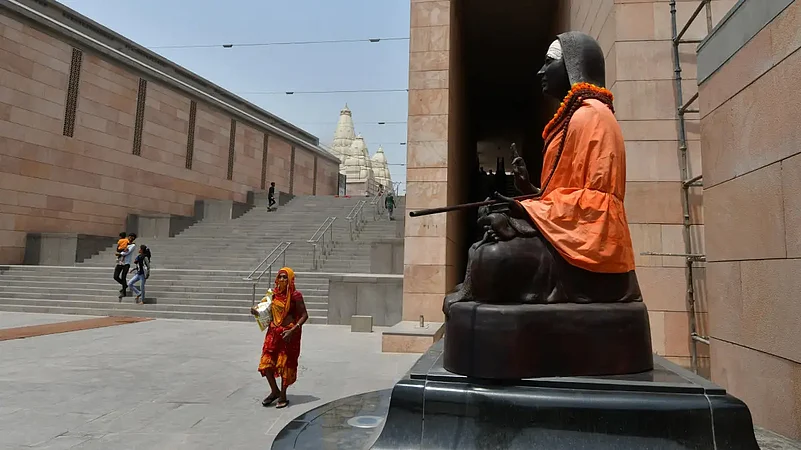The Gyanvapi mosque-Shringar Gauri temple case has led to divided opinions within the holy city of Kashi. The city, home to several temples and priestly families that have taken care of these temple complexes for centuries, has been in the eye of a political slugfest after five Hindu women moved a local court in Varanasi, seeking permission to pray at Sringar Gauri complex located inside the mosque premises.
While the debate initially started with the right for Hindus to pray at the Shringar Gauri complex, located at a western wall in the backside of the mosque, the discovery of what the Hindu side claimed to be a shivling in the Wazookhana of the mosque - a spot for devotees to perform ablutions before Namaz - has led to further debate and division. So much so that the main priestly family of mahants that has taken care of the Vishweshwar temple complex for centuries itself has become divided on the issue.
Advertisement
“It is a Shivling. What else could it be?,” says Dr Kulpati Tiwari, the present Mahant of Kashi Vishweshwar temple. “Who are we to question where and how the Lord will emerge?" he adds.

“This temple was founded by our ancestor Narayan Bhatt in the pre-Mughal period. From then till now, my family has taken care of this temple,” Dr Tiwari states. “When Aurangzeb broke the temple, my family saved the Shivling. After the downfall of Aurangzeb, the Shivling was established again at the spot where the Vishwanath temple stands today. The spot used to be our ancestral home. When Maratha Queen Ahilya Bai Holkar from Indore came in 1780, she sought to build a temple at the same spot. And thus the temple was built and has been in the care of my family ever since,” he tells Outlook.
Advertisement
Mahant Rajender Tiwari, who now lives a few kilometres away from the Kashi Vishwanath complex where the family’s erstwhile home had been, agrees with this version. Tiwari, who has been a staunch opponent of Prime Minister Narendra Modi’s new Kashi Vishwanath Corridor project, has been living in Lunka since their ancestral home was demolished as part of the Corridor construction. Several other members of the Mahant’s family have also been dispersed to other parts of town while Dr Kulpati Tripathi lives in a building close to the Vishwanath temple from where he runs the temple administration.
Tiwari does not agree that the object found in the wazoo khana during the survey of Gyanvapi’s premises is an ancient Shivling. The petitioners on the Hindu side are claiming that they went looking for Gauri (an avatar of Shiva’s wife Parvati) and found Shiva too. Some claim that the Shivling found during the survey is the original Vishwanath’s Shivling which had been lost during Aurangzeb’s time.
Rajender Tiwari, however, rubbishes the claim. “If the Shivling hidden and later established by us was the original Shivling, how are some people claiming that the object found in the wazoo khana is the original Shivling?"
“They are claiming this is a Dharam Yuddha for Hindus. Where were these Hindus when the administration was breaking down temples to build the Corridor? They want to start praying to the Shivling they claim to have found in the mosque. Where were these Hindus when the administration carelessly left Shivlings lying on the ground?” he asks.
Reflecting on the discovery, Tiwari states that the object is most likely to be part of a fountain. “Ahilyabai Holkar only founded the current temple. The original Shivling was with us. Now, some Hindus are claiming the Shivling found in the wazu khana is the original Vishweshwar Shivling, that the one currently in the temple was established by Ahilyabai. That’s entirely false. Our family has always had the real Shivling,” Tripathi adds. He points out further anomalies. “What they found in the wazu khana has holes and long shafts that look like they held pipes inside them. A Shivling doesn’t have holes. If you try to drill a hole in one, it breaks,” Tiwari says.
Advertisement
Read the In-Depth Story -- Gyanvapi: Tales Of Fear, Hope And Redemption From Ancient Kashi




















